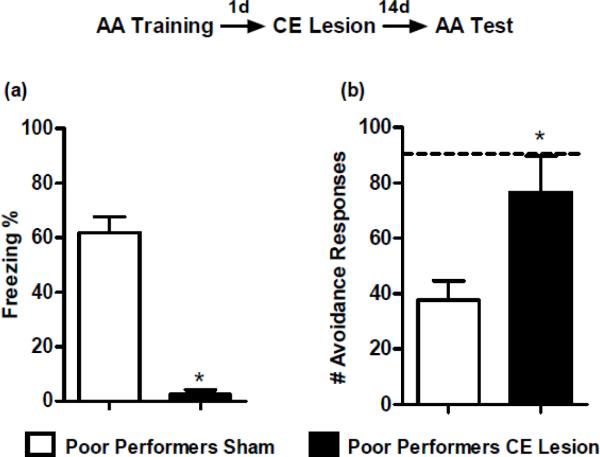Figure 4.
(a) Mean ± SE percentage freezing during the first retraining session of poor performers that received sham surgeries (n = 5) or bilateral electrolytic central amygdala (CE) lesions (n = 5). CE damage in poor performers abolished freezing reactions compared to sham. (b) Mean ± SE number of active avoidance (AA) responses for poor performers during the first two retraining sessions. CE-lesioned poor performers showed significantly higher levels of AA responses compared to the sham. In fact, the CE lesion increased AA responses to asymptotic levels of performance by the first retraining session. Dashed line represents the mean for good performers at training day 11, which corresponds to the first retraining session in poor performers.

